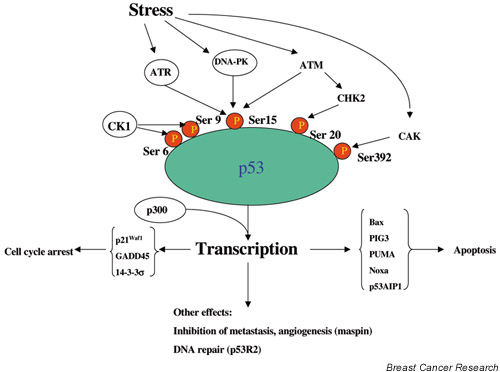Figure 1.

A simplified model of some of the components of p53 signalling. Under normal conditions, the p53 pathway operates on 'standby' mode. Activation occurs in response to a variety of cellular stresses such as DNA damage and expression of activated oncogenes. See [1] for a more detailed description of the pathways activated by specific stresses. Post-translational modifications (such as phosphorylation at the indicated serine residues) activate the protein for DNA binding and transactivation of downstream 'effector' genes that mediate the tumour suppressor actions of p53. The outcome of activation depends on the nature and magnitude of the stress, its transduction via specific upstream kinases, and the resultant programme of p53-dependent gene expression. Transcriptional coactivators such as apoptosis stimulating protein of p53 and BRCA1 (not shown) may further 'fine tune' the response and, in some cases, preferentially promote specific cellular responses such as apoptosis. Many of the components of this signalling pathway are targets for genetic and/or epigenetic changes in breast cancer as described in the text. Not shown is the induction of MDM2, which acts as a negative feedback regulator of the pathway by promoting the degradation of p53. Because of space limitations, other important constituents of the pathway have had to be omitted.
